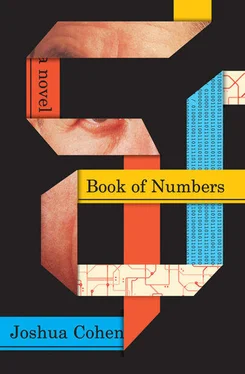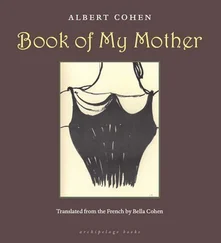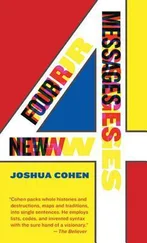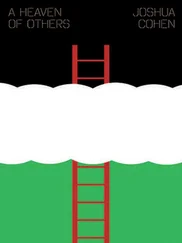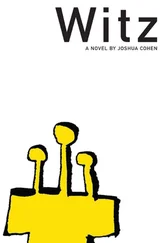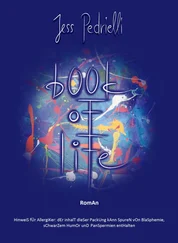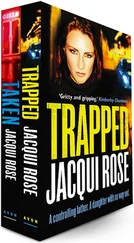I drudged the aisle past drowsing, txting, calling — my presence was the least of their cares. I was lost, or had lost my license to booze or drugs, or my Audi or Saab to a divorce, or else I was reconnoitering the commute as a consultant, for ways to reduce its costs. Whichever it was, they rebuffed me. Yasir and his seatmate were engaged, not in whispers, but also not in German, and though he didn’t even raise his mad scientist dome as I went by, I felt his forehead measure me, that stain like a voracious sensor.
I settled into the nosebleed row of empties, alone on the aisle. I had only the backs of their heads, carpet bunches of skin, treadless tires. Bridge congestion. Stops.
Yasir got off with a few coworkers who’d kept the faith and a few who hadn’t, and an unemployed Jew in a straightjacket suit — I crossed the street and down the block. They peeled off in all directions. Petting unripe melons at the markets, laying dominoes for khat, or just sitting by the TV in the movie of their lives, for me, their only standingroom audience. Yasir slipped into a joint booming ghetto lute music and tacked with kebab posters in lieu of menus, its Biohalal Geöffnet sign drooping its plug onto the polyvinyl, dim.
I dawdled catercorner in front of a clothingmart, until its proprietor leaned out to spit a husk of sunflower seed. I moved nextdoor, the other nextdoor. Bazaars of adhan chronometers, qibla compasses, digi misbahas, that collapsible thing you rest your book on, a rehal. Another prop wielded a pikstik to beat the rainwater off his awning.
Yasir stepped out through the flap of the plastic tarp tent for sidewalk dining, holding a brownbag flat because its bottom was spotting greasy.
We went on until we came to what Vienna calls a Trafik, apparently, a boxy phoneboothesque kiosk, a newsagent. The sign atop it, Maribi.
The clerk, who must’ve been late or just impatient for a bathroom, bowed under the counter, removed his apron and embraced it around Yasir, and Yasir, who wouldn’t bow, but lifted the counter, became the clerk — next shift.
What Yasir did was: took a razorblade and slit the brownbag into a placemat, chewed at a tangle of red drumsticks shaped like Austria. Then he folded the placemat over the bones, wedged the parcel behind the racks. He cracked the beverage cooler for a bucket and squeegee. Then it was lifting the counter and out again to swipe at the plexiplastered ads on the side (the lotto), the rear (budget airfare), the side (the lotto), and the sliding partition (between the automat pennants).
What else: he sold some papers and magazines, some stamps, candies and tickets for the bahn or tram, Almdudlers, Red Bulls, and diapers. Individual diapers. A customer brought in a blender and he repaired it. Atop the coingrimed counter. Yasir fixed a watch, toolless. But it might’ve been his watch.
He batched the papers and mags now a day deceased and bound them in twine and stacked them tidy for curbside burial.
But only after he’d hopped up on them, for the height to lower the Trafik’s shutter — he strained. And I would’ve helped. If I hadn’t been his size, or strange to him. The lock he used was like the U-type, for bicycles.
Yasir zipped his jacket, and turned the corner, so I did too, turned it for blocks. His apron flared out behind him. I kept up, kept studying him, and tried to adopt his shambles of a stride so as not to alarm the night. The engine misfiring was inside me, my heart.
He stopped at a middle house. A flypaper façade of swatted windows. This was a man who didn’t bring his glass home with him. I stomped for warmth, and for a light that wasn’t the moon’s, which wasn’t at crescent, or full, but half.
I went up to the door and read the slapdash stickered buzzers. Their names were twinned, written in this script and then repeated below in a script resembling my testing this pen, licking its tip then testing again. Maribi. All pens at the very end of their ink begin to write in Arabic.
At a middle floor a light went on. No shadow child. No revenant wife. And then curtains were drawn like how Moms lets down her hair.
\
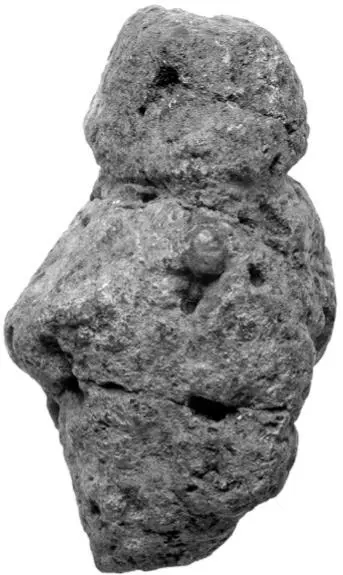
The oldest representations of the human: that their physiques remain consistent throughout the Upper Paleolithic augurs for a religious explanation, while the fact that their materials, sizes, postures, and adornments vary considerably within that period augurs for an artistic inspiration as well. Still, yet another theory is more practical. They’re maps, itineraries, schedules, lessons in that most primitive school, the body. A culture might’ve chipped the softness of the human form from out of hardness as a lesson for its children or even for posterity, to show what it too will inevitably suffer, the swell of pregnancy, starvation, dehydration, disease, all burst at once in the selfsame corpus. If this were true, however, there would’ve been a tale that interpreted all the massed tragic layers, the strata. There would’ve been an encryption key, to enable the deciphering of the intricate systems of nicks and knaps since lost to hydraulics, aeolian processes, and time. Which brings us to the issue of value. Given that all pebbles are primordial, age can’t determine worth, rather it’s the hand, the presence of the human hand, which cuts from red tuff the stuff that merits enshrining. It’s this intentionality or, better, mindful guidance, which distinguishes nature from both religion and art. A sedimentary hunk cleaved by wind or water tells nothing, while a hunk cleaved by a human who’d lived with the imperative to make tells all. But then there are still a handful of rocks that might go either way — rocks that some “read” as anthropomorphic, undoubtedly purposefully shaped (“artifacts”), and that others “read” as the result of tectonic accidents, of convergences of erosion, spall, and aberrant psychologies (“geofacts”). What some regard as an intentional slice or whittle — a woman’s waist or limb — others regard as the wishful incidents of weather, tidal salinities, volcanic spews, ground mineral grinding mineral. See what you want to see, hear what you want to hear, whatever you search for, you find. And the more controversial specimens have been found in Israel, mostly by Arab children.
(SOURCES: The Birth of Fertility: Artifacts, Geofacts, and the Male Imagination, Alana Hampur, PhD. My mother, my loneliness, winter.)
Museum hours remain the same, but prayer hours are subject to change. Gods don’t take a day off, the sun just leaves earlier. The clouds. The clouds weigh gravid.
Out of my hostel the Trafik was a right and a left and between the turns, a bridge like a gangrenous rainbow over the Wienfluss.
A minority cleft, a migrant clave, posteverywar buildings to accommodate any ethnicity. In the yards weeding intervenient to the units of whatever the German term is, Socialistcommunistworkerhousingthebalconiesarefalling, the laundry was being taken in, colorless veils and shawls like photos hung dripping but not yet developed.
All of this neighborhood might as well have been downtown Jewish NY at the turn of last century — here was the same stage of nascent assimilation — just translate the Yiddish, switch around the referents, and update the technologies. Easier times, simpler times, tenements, peddler carts — what’s the Arabic for “egg creams”? the Persian for “spaldeens”? Bundled boys were choosing sides for a game that involved kicking a punctured tire. Then they were kicking each other. Scarves waved. Penalties.
Читать дальше
